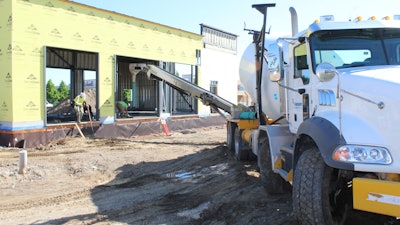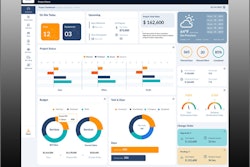
By Nathan Medcalf, Contributing Editor
Industrial, commercial and institutional contractor Vicano Construction uses Procore to better track data from projects and to save time and money by avoiding rework.
Procore gives Vicano a consistent format for all project documentation, so Vicano Construction is experiencing greater consistency in the information that is being reported.
“One of the problems we were trying to solve when we implemented Procore is the organization of all our current projects,” says Marc Vicano, project manager, Vicano Construction. “After significant time lapse since completion of the work or due to employee turnover, it could become difficult to find records of events that may have happened on a construction site. That is the first problem we were trying to solve.” Marc Vicano says his field people use Procore's drawing tool to mark up documents "hourly" in a much-accelerated process for resolving change orders.Procore
Marc Vicano says his field people use Procore's drawing tool to mark up documents "hourly" in a much-accelerated process for resolving change orders.Procore
However, consistent and accurate documentation was not only challenging due to time and turnover, but current employees on current projects were reporting slightly different from everyone else. “Our projects are managed by different groups of people and each individual has a tendency to do things a little different than others. Over time, changes compounded, and the whole reporting system goes on a tangent,” says Vicano.
The other problem Marc says the company wanted to solve is the gaps in collaboration between the field and the office. “The construction industry is very much an office to field industry where the office feeds the field with information they need to build. And that collaboration is essential to us,” says Vicano. “Those are the primary reasons we looked at software and landed on Procore.”
In the business of change
Change could be the only constant on a construction site.
“We are in the business of change. Change happens on a daily basis in the field and information flows very rapidly. So, it is critical to keep the field team up to date and organized with the proper information,” says Vicano.
When there is a change on a construction site, oftentimes an RFI (request for information) is generated. “These RFIs happen during the course of construction, and field crews need some direction and an answer fast. The way it is set up in Procore is really intuitive and easy-to-use. Also, they have recently put a lot of focus on their mobile app, so now our field teams can create those RFIs and send them out within minutes, and those RFIs get answered much more quickly,” says Vicano.
When an RFI is created in Procore, the proper people are already copied on it, because those structures are completed at the start of a project. As a result, people don’t have to think about to whom they should send the RFI or be concerned about accidently not including someone in the RFI.
“Since that workflow structure is already built into Procore, we always know whose ‘ball in court’ it is. That is a Procore term. It really highlights whose responsibility something is sitting with,” says Vicano. This avoids the wasted time and confusion of not knowing who exactly is holding up a project.
Through Procore, RFIs get resolved in minutes instead of hours or days; this seriously decreases downtime and rework. “A construction project is very collaborative and involves many people. Procore helps us save time and avoid rework by giving us the tools to be more organized and communicate faster. By keeping people on the same page and on their toes with current and accurate information is how we save time and avoid rework.”
Thinking like a contractor
According to Vicano, the company didn’t want any technologies that meant a lot of training or changing the way they think. “Procore already thought how we thought and that was a big deal for us,” says Vicano. “This is evident in the way the tools are formatted; there is a process in the construction industry for building projects and Procore follows it. The RFIs, for example, are exactly how we were structuring our RFIs before using Procore.”
Another really good example of how Procore thinks like a contractor, according to Vicano, is the submittal process. “By submittal, I mean any sample, such as a floor-tile sample or custom light fixture that needs to be approved by the owner or architect. It could also be a shop drawing, which conveys the intention of the design/drawing back to the architect for review, so they are comfortable we understand the intention of the design.” Similar to the RFIs, the structure is already there; it was built by Procore.
Procore’s drawing tool allows contractors to mark up documents like they would a paper drawing or blueprint. “We use that tool hourly,” says Vicano. “In the past 10+ years and even now, I see people on construction projects walking around with large paper drawings. We are really seeing that going away. Now, we are seeing more tablets. When there is a change, the office uploads it and emails it within minutes. Previously, days could go by before changes were made in the field.”


















